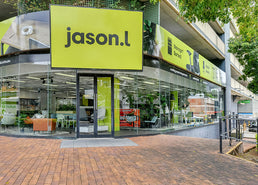- Office Furniture
- Power & Data Management
- Cable Management
-
-
-
Desktop Linking Devices (A Pair)
Regular price $44Regular priceUnit price / per -
-
-
Desktop Linking Devices (A Pair)
Regular price $44Regular priceUnit price / per -


Cable Management Basket Single Metal Tray
Regular price $34Regular priceUnit price / per -
CMS Cable Management Basket Single Metal+Tray Includes 4...
Regular price $103Regular priceUnit price / per -


-
Cable Management Basket Back to Back Metal Tray
Regular price $63Regular priceUnit price / per -
Cable Management Basket Dual Tier Metal Tray
Regular price $61Regular priceUnit price / per -
Desktop Linking Devices (A Pair)
Regular price $44Regular priceUnit price / per -
Umbilical Cord Floor to Desk 0.7m
Regular price $130Regular priceUnit price / per -
Cable Management Double Cable Cleat Pack of 5
Regular price $29Regular priceUnit price / per -
CMS Deluxe Cable Management Spine
Regular price $187Regular priceUnit price / per -
Umbilical Cord Ceiling to Floor 3m
Regular price $409Regular priceUnit price / per -
DPG Cable Management White Basket Single Metal+Tray Include...
Regular price $103Regular priceUnit price / per -
DPG Cable Management Basket Back to Back Metal+Tray...
Regular price $191Regular priceUnit price / per -
-
DPG Cable Management Basket Single Metal+Tray Including Power...
Regular price $54Regular priceUnit price / per -
DPG Umbilical Cord Ceiling to Floor 2.7m
Regular price $386Regular priceUnit price / per -
-
CMS Cable Management Basket Back to Back Metal+Tray...
Regular price $191Regular priceUnit price / per -
CMS Centrepoint 2 - Power Pole 300mm
Regular price $530Regular priceUnit price / per -
CMS Centrepoint 2 - Freestanding Power Pole 900mm
Regular price $270Regular priceUnit price / per -
CMS Centrepoint 2 Power Pole - Floor to...
Regular price $210Regular priceUnit price / per -
CMS Centrepoint 2 Power Pole - Ceiling to...
Regular price $394Regular priceUnit price / per -
CMS Centrepoint 2 Power Pole - Ceiling to...
Regular price $456Regular priceUnit price / per -
CMS Cable Shute - Height Adjustable Desk [750H...
Regular price $121Regular priceUnit price / per -
CMS Cable Shute - Height Adjustable Desk [975H...
Regular price $121Regular priceUnit price / per -
DPG Cable Management Basket Back to Back Metal+Tray...
Regular price $93Regular priceUnit price / per
Get your fitout booked today

Completed in under 10 days.

With dedicated project management from start to finish.

Full-service. Layout design,
delivery, and installation.

And showrooms nationwide for your convenience.
Our client's experience
Read case study
They have a really large catalogue, so there's lots of options and you can talk to anyone in their team. If something needs to be modified, they're flexible there as well.
Alison BinskinHead of Business Enablement at ProspaKim
@Kim - 30day(s) ago
Very happy with the service. Was kept up to date with delivery the whole through. Item arrived on time. The delivery person who...
Ashis Sharma (Ashis Sharma)
@Ashis Sharma (Ashis Sharma) - 1month(s) ago
Excellant service. Just above and yet. Kates and John were just amazing. Everything was delivered and installed as expected
Ben Johnston
@Ben Johnston - 1month(s) ago
Great customer service
Zac Kurien
@Zac Kurien - 2month(s) ago
Diego, the desk installer at this company is worth his weight in gold. He took the time to pay attention to my needs...
Want the full JasonL experience?
Stop by a showroom and say hello.
Sydney City Showroom
Shop 3, 29-31 O'Riordan Street,
Alexandria, NSW 2015
Call: 1300 350 618 Alexandria, NSW 2015
Get Directions
3D Showroom
walkthrough

Brisbane Showroom
728 Ann Street,
Fortitude Valley, QLD 4006
Call: 1300 350 629 Fortitude Valley, QLD 4006
Get Directions
3D Showroom
walkthrough

Western Sydney Showroom
15 Sturt Street,
Smithfield, NSW 2164
Call: 1300 350 624 Smithfield, NSW 2164
Get Directions
3D Showroom
walkthrough

Adelaide Showroom
176 Grote Street,
Adelaide, SA 5000
Call: 1300 395 731 Adelaide, SA 5000
Get Directions
3D Showroom
walkthrough

Melbourne Showroom
100 Park Street,
South Melbourne, VIC 3205
Call: 1300 350 627 South Melbourne, VIC 3205
Get Directions
3D Showroom
walkthrough

Perth Showroom
11 King Edward Road,
Osborne Park, WA 6017
Call: 1300 249 035 Osborne Park, WA 6017
Get Directions
3D Showroom
walkthrough

East Coast Distribution Centre
2A/149 McCredie Road,
Smithfield, NSW 2164
Call: 1300 350 624 Smithfield, NSW 2164
Get Directions
3D Showroom
walkthrough


The incredible team
that will assist you in
Sydney.
Meet Eric Tehranchi, our Showroom Manager in Alexandria. With years of experience and a deep understanding of smart office solutions, Eric is here to help you transform your Sydney workspace with ease. From layout ideas to product advice, he brings energy, care, and clarity to every project. Sydney, you’re in expert hands. Thank you Eric!

Giulia Petrazzuolo
ConsultantI provide expert guidance and assistance to businesses in selecting, planning, and optimizing their office furniture and layout to create functional, comfortable, and aesthetically pleasing workspaces.
["93","121","121","456","394","210","270","530","191","186","386","54","140","191","103","409","187","29","130","44","61","63","186","103","34"]








![CMS Cable Management Basket Single Metal+Tray Includes 4 Power 2 Data [950W x 105H] CMS none none](http://www.jasonl.com.au/cdn/shop/files/cms-cable-management-basket-single-metaltray-includes-4-power-2-data-950w-x-105h-948597.jpg?v=1736330534&width=370)













![DPG Cable Management White Basket Single Metal+Tray Include 4 Power 2 Data [950W x 105H] DPG none none](http://www.jasonl.com.au/cdn/shop/files/dpg-cable-management-white-basket-single-metaltray-include-4-power-2-data-950w-x-105h-708969.jpg?v=1731746988&width=370)

![DPG Cable Management Basket Back to Back Metal+Tray Include 2 x 4 Power 4 Data [950W x 105H] DPG none none](http://www.jasonl.com.au/cdn/shop/files/dpg-cable-management-basket-back-to-back-metaltray-include-2-x-4-power-4-data-950w-x-105h-553797.jpg?v=1731746972&width=370)







![CMS Cable Management Basket Back to Back Metal+Tray Include 2 x 4 Power 4 Data [950W x 105H] CMS none none](http://www.jasonl.com.au/cdn/shop/files/cms-cable-management-basket-back-to-back-metaltray-include-2-x-4-power-4-data-950w-x-105h-953820.jpg?v=1731746925&width=370)











![CMS Cable Shute - Height Adjustable Desk [750H x 80W] CMS white](http://www.jasonl.com.au/cdn/shop/products/cms-cable-shute-height-adjustable-desk-750h-x-80w-954763.jpg?v=1627087739&width=370)

![CMS Cable Shute - Height Adjustable Desk [975H x 80W] CMS white](http://www.jasonl.com.au/cdn/shop/products/cms-cable-shute-height-adjustable-desk-975h-x-80w-426739.jpg?v=1627021283&width=370)


































